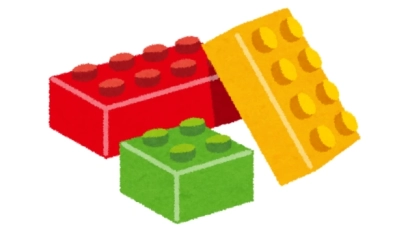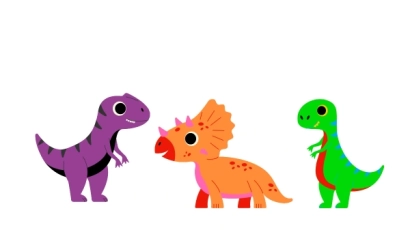Heya, TEACCH! Nope, we didn’t spell that wrong – TEACCH is a structured teaching approach created specifically for individuals with autism. In this article, we’ll explore the history of TEACCH, its principles, and how you can implement it in your classroom, step-by-step! We’ve talked a bit about TEACCH here, but we’ll elaborate even more about the approach in this article.
TEACCH consists of several frameworks and flexible elements that we’re going to delve into in a bit, and when implemented effectively, TEACCH can help with the learning and development of children with autism.
Quick Introduction To TEACCH
What does TEACCH stand for?
TEACCH is an acronym for Treatment and Education of Autistic and related Communications Handicapped children.
What’s the history of TEACCH?
TEACCH was developed by an autism researcher from the University of North Carolina – Eric Schopler – in the mid-1960s. Presently, it’s still a valid and well-researched approach to teaching kids with autism.
What is TEACCH used for?
TEACCH is a teaching framework that educators can use when teaching children with autism. While the Hanen Approach focuses on communication strategies, and ABA targets behaviour, TEACCH focuses on using structure and visual support to teach skills and promote independence in autistic individuals.

What are the benefits of TEACCH?
In particular, TEACCH places emphasis on the independence of students. The ultimate goal of TEACCH is to ensure that students are self-sufficient and able to grow in terms of:
- Social interactions
- Communication skills
- Motor skills
- School, family and social adaptation.
What are the elements of TEACCH?
Practically speaking, there are five key elements of TEACCH that can be incorporated into the classroom. At a glance, we’ve listed them below. We’re going to go into each element in detail and discuss examples of how they can be implemented into a learning environment.
- Physical structure
- Schedules
- Work systems
- Routines and visual strategies
- Visual structure of materials.
Each of these strategies build on the other, kind of like a learning pyramid. These strategies are backed by credible research from the Indiana Resource Center for Autism, compiled by Reading Rockets.
Physical structure
Physical structure refers to the physical environment of the student. Where are classes taking place? How are the materials and furniture set up? What is the organisation system for the student to know about their next class?
The physical structure of one’s learning environment matters. Think of it this way: It would be pretty hard to focus when working on an extremely cluttered desk, as compared to a neat one with only the given assignment on its surface. Little things like this make up a supportive physical environment for the learner and allow them to better focus on the lesson. This is because they are less distracted by the physical items in their environment.
A well thought-out physical structure for a classroom should consider both the distractibility of the environment, and its organisation.
Examples of effective physical structure
For example, a classroom could be segmented into different areas using masking tape, rolling whiteboards, or other visual cues. The play area can be separated from the work area by a taped line, for instance. And the work area can be further demarcated into an individual work area (such as a small desk) and a group work area (like a large mat.)

These clear boundaries allow students to better understand their roles and focus on the task at hand – in the play area, they can engage in loud and active play. But at the work area, they are required to sit still and concentrate on the given assignment.
To further encourage focus, visual and auditory distractions should be minimised. This means that anything not directly related to the task at hand should be put away or covered up. This can be done by organising unrelated assignments into colour-coded folders, for example. Alternatively, they can be covered up with cardboard or fabric.
Schedules
The second element of TEACCH is quite simple: It relies on the principle that predictable sequences, or schedules, can greatly enrich a student’s learning. Essentially, these schedules should clearly identify where and when the student should be at any given time.
The goal of these schedules is to facilitate the independence of learners. By helping them to understand the tasks they need to do, the teacher reduces the amount of adult delivered prompting. In fact, this predictability helps reduce anxiety and improves focus as they know clearly what they are supposed to be doing, and what comes next.
Examples of schedules in learning environments
While these schedules are tangible, they can be flexible to suit the learner’s needs. For example, a visual learner might benefit from a colour coded schedule, with different icons representing different subjects. A student with a read/write learning style may instead benefit more from a written schedule, with a bullet point list of tasks that need to be done each day.
It’s important that the information be presented in a way that’s meaningful to students. For instance, an icon of Lego bricks could represent the play area that we earlier discussed in physical structure. This shows the student that there’s a dedicated block of time to play. Alternatively, a photograph of said play area could convey the same information effectively.
Work systems
A work system is an organisational system that gives students information about what to expect when carrying out a task. Think of it as a subset of the schedules mentioned above, a kind of ‘schedule of a schedule.’ Basically, a work system tells the student:
- What to do
- How to do it
- How to know when the task is done
- What to do next.
In this way, a well-planned work system is able to help the student seamlessly transition between the tasks in their schedule. Another perk of implementing work systems is that it helps students with sequencing. Students may have difficulty remembering the exact order in which a task must be completed and a work system simplifies this in a direct and clear manner.
For this same reason, a work system is able to reduce distractibility and improve the focus of the learner. A well-designed work system should be able to direct the student to finish the objective of the task at hand, and only the task at hand.
Work systems are therefore also known as activity schedules, or more simply, to-do lists.
Examples of work systems
Many of us probably have some kind of work system in place, unconsciously. A very simple example that can be implemented in a classroom setting is the left-to-right work system. The main idea of this work system is that the task that needs to be done is set on the left of the desk. The student finishes the task, then puts it on the right of the desk, in a ‘finished’ box, like a tray or folder. When that’s done, they can turn around and get the next task from the table behind them.
Alternatively, another work system could be an icon work system. If the task is to get the student to wash their hands, a picture board showing the different steps to wash their hands can be put up as a reminder of the sequential order. The student can follow along with the visual icons of the hand washing steps. The last icon could direct the student to the next task that needs to be done – for example, the Lego bricks icon which lets the student know that they can now play after washing their hands.

Routines and visual strategies
The fourth element of TEACCH is fairly straightforward, and quite similar to the second (schedules). The idea is to implement such routines and visual reminders of the routines in the classroom. This provides a sense of stability for the student and gives them a comfortable rhythm to follow throughout the day.
It could also be helpful to introduce some variation to the routines every once in a while, to allow the student to be more comfortable to change. These variations do not need to be anything particularly drastic – it can be as simple as extending playtime by 15 min, or guiding a student through a puzzle they haven’t tried before.
Visual structure of materials
Visual structure aids the student in understanding how a task should be completed. The idea of visual structure should work in tandem with the work systems previously mentioned, and is meant to be a tangible element that makes the task more meaningful to students.
Visual structures help students better process the task at hand, which allows them to do the task more independently. This thus achieves one of the main goals of TEACCH. In essence, visual structures should include:
- Visual instructions – how the task is conveyed to the student (a list of steps? a picture of the completed product?)
- Visual organisation (how the materials for the task is arranged)
- Visual clarity (visual elements that may encourage student motivation)
Examples of visual structure
Examples of visual structure in a learning environment can include a written list with pictures that directs the student on what to do. Alternatively, the teacher can include elements of the student’s special interest in such lists. If the student really likes a cartoon character, for instance, the teacher can then print out a picture of the cartoon character with a text bubble of the task that needs to be done.

That’s the end of our quick guide to the TEACCH approach. What do you think? If you have any questions, or personal tips with using this approach, let us know! We’d love to hear from you 💬👇

